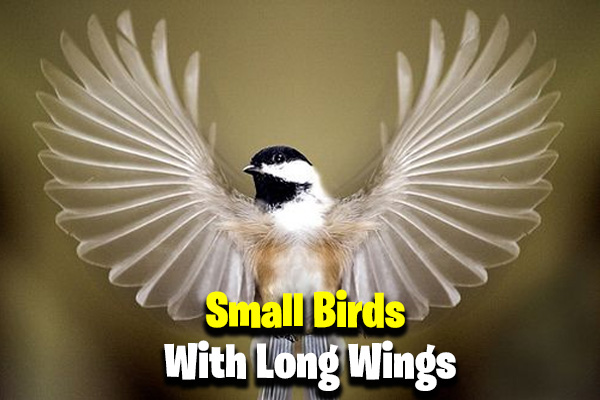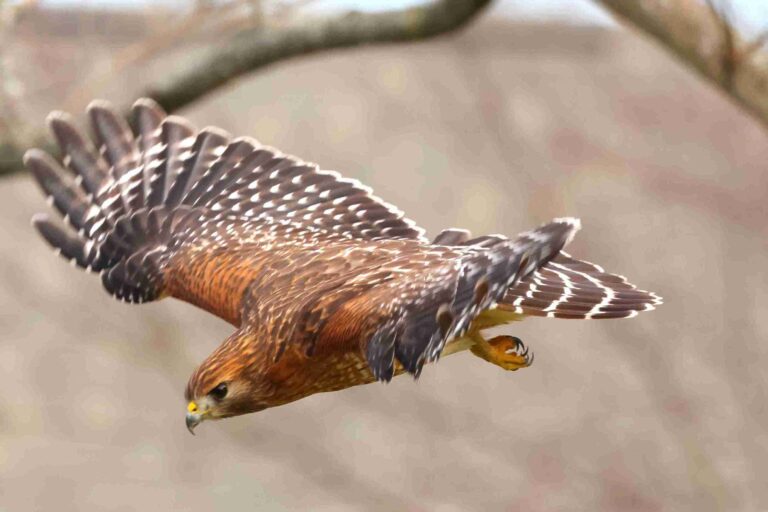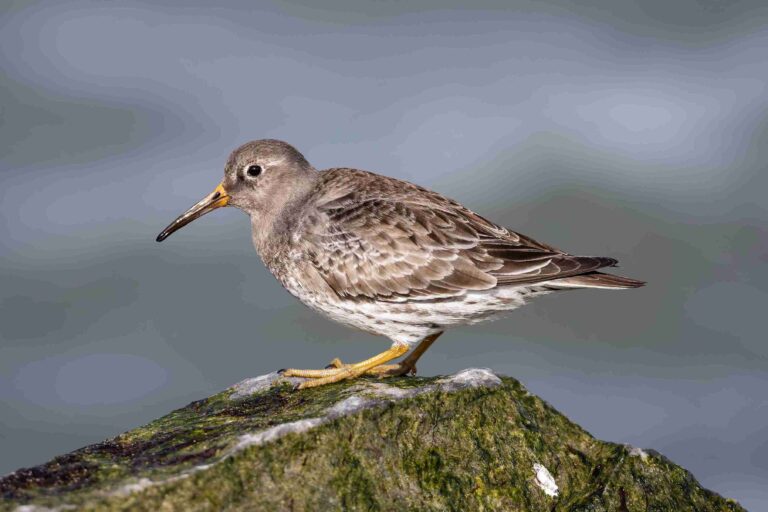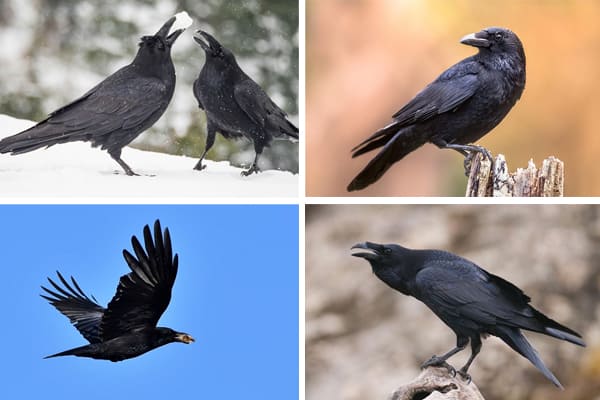Top 7 Small Birds With Long Wings (ID Guide With Photos)
Ever noticed how some small birds glide through the sky with ease, thanks to their long wings? In our guide, we dive into the world of these small birds with long wings. We’ll share birdwatching tips and insights on ten unique species. These birds not only fill our skies but also show off their special traits, homes, and ways of living. They’re sure to capture the interest of both new and seasoned birdwatchers.
Let’s discover the secrets of these incredible flyers. We’ll learn more about the beauty and variety of birds, deepening our love for nature.
Introduction to Small Birds With Long Wings
Small birds with long wings amaze us with their agility and grace. They become favorites in birdwatching, showing off their amazing flying skills above our gardens and parks. With over 9,000 bird species worldwide and about 715 in the U.S., identifying these small birds is a fun challenge. Learning about their unique traits helps us better identify them, making each sighting special.
Swallows and hummingbirds are especially captivating. They show off bright colors and incredible flying skills, making us watch in awe. Swallows have long wings that let them fly super fast and do aerial tricks. Hummingbirds, like the Ruby-throated Hummingbird, beat their wings up to 80 times a second, letting them hover in place.
Knowing about the different types of wings helps us in birdwatching. For example, eagles and most hawks use passive soaring wings to glide smoothly. Swift birds like terns and sandpipers have high-speed wings for quick, agile flight. Learning these details makes birdwatching more exciting.
Watching these small birds also makes us aware of the challenges they face. Habitat loss, building collisions, and environmental threats harm their numbers. Birdwatching lets us enjoy these birds while encouraging us to help protect them. As we learn more about their importance, our connection with these amazing birds grows stronger.
Identifying Features of Small Birds
Identifying birds starts with looking at their size, shape, color, and behavior. These details help us tell apart small, long-winged birds in the wild. Knowing the size and shape of different birds makes it easier to recognize them.
Swallow birds have long, slender bodies and wings perfect for flying fast. Their wing shape lets them dodge and weave with ease. Hummingbirds, on the other hand, move quickly and hover in place. These unique traits help us see their beauty and learn about their lives.
Using specific measurements helps us identify birds better. We can look at their bill sizes, tail shapes, and body proportions. For example, some birds have long, straight bills, while others have full tails and thin bodies. These details make it easier to figure out which bird we’re looking at.
Noticing a bird’s silhouette can also be very useful. The outline often tells us a lot about the bird’s type. Whether it’s the big size of a Northern Cardinal or the beauty of a Baltimore Oriole, each bird has its own special traits. By paying attention to these features, we learn more about long-winged birds.
1. Swallow Birds
Swallows are known for their amazing flying skills. They have long, thin bodies and wings that help them catch insects in mid-air. This makes them a joy to watch.
This section will look at what makes swallowbirds special. We’ll also explore where they live and how they behave.
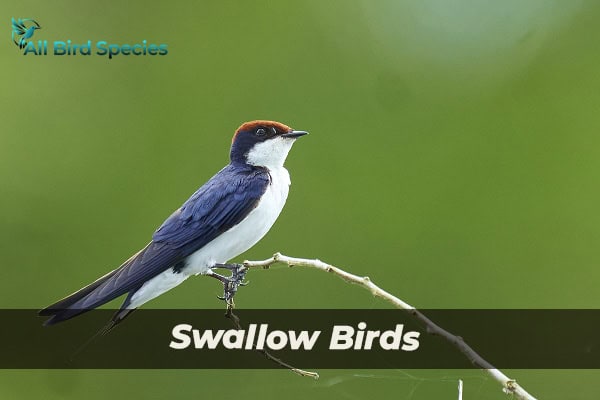
Description and Characteristics
Swallow birds have sleek bodies that help them move fast in the air. Their long, pointed wings are key for their fast feeding habits. They can fly very high, sometimes over 10,000 feet, during their migrations.
They make a variety of sounds, like chirps and songs, when they talk to each other. This shows they are social birds.
Habitat and Behavior
Swallows live in many places, from the countryside to cities. They like open areas where they can easily find flying insects to eat. Different swallow species have different homes, like nesting boxes near water or on cliffs.
Some swallows migrate very far, up to 600 miles in one day. Watching them during breeding season can teach us a lot about their lives. It shows how they adapt to changes in their environment and react to things like climate change.
| Species | Distinct Features | Habitat Preferences | Diet |
|---|---|---|---|
| Barn Swallow | Impressive flying skills | Near water sources, open fields | Insects |
| Tree Swallow | Brightly colored, shorter tail | Nesting boxes near the water | Flying insects |
| Cliff Swallow | Bumpy underside-shaped nests | Cliff edges, man-made structures | Insects |
| Purple Martin | Largest swallow, social nester | Multi-compartment birdhouses | Flying insects |
Learning about swallows shows us their importance in nature. It also tells us why we need to protect their homes. Keeping their habitats safe helps them stay in our skies.
2. Hummingbirds
Hummingbirds amaze us with their beauty and speed. They have physical characteristics like shiny feathers and fast wing beats. This lets them hover in mid-air easily. Despite weighing only 3 to 6 grams, they can lift more weight than big birds like eagles.
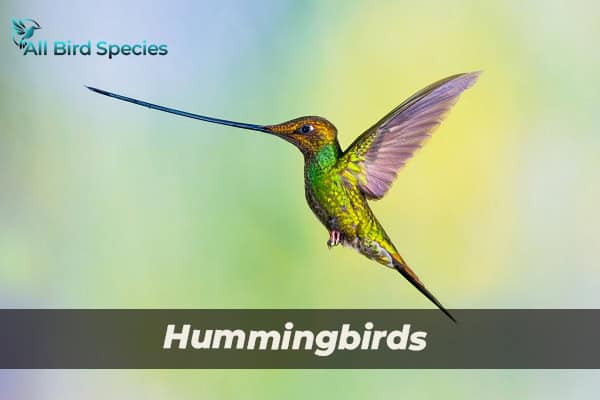
Physical Appearance
Hummingbirds are known for their bright colors and detailed designs. Their feathers shine in the sun, making them a beautiful sight. They have special beaks and tongues for drinking nectar from flowers. For example, female Ruby-throated Hummingbirds lay two to three small eggs.
Diet and Feeding Habits
Hummingbirds are important to their ecosystems. They eat a lot of sugar, getting it from flowers. They also eat insects to help their babies grow strong bones and beaks.
Insects give them the protein they need. Spiders are also on their menu, providing important amino acids. These acids help with brain and nervous system growth. Many hummingbirds, like the Ruby-throated, migrate long distances to find food.
Small Swift Birds With Long Wings
Small swift birds amaze us with their incredible flying skills. The Common Swift is a great example, known for its high speeds and long wings. These features let them cover huge distances, reaching speeds of almost 200 miles per hour in the air. This makes them some of the fastest birds in North America.
Identifying these birds starts with their unique flying style. They move quickly and make sharp turns while chasing insects. Their thin body and special wing shape make them stand out in the sky. Both adult and young swifts can go into a sleep-like state when it’s cold or when food is scarce. This shows how they adapt to survive tough times.
Understanding their nesting habits is key when thinking about these birds. For example, White-throated Swifts use their saliva to make a strong glue for their nests. This shows their clever use of what they have around them. Sadly, some species like the Chimney Swift are losing their homes and their numbers are dropping. Efforts like building special towers for them help support these birds as they play a vital role in our world.
3. Barn Swallow
When we think of the barn swallow, we picture a bird with shiny blue and rust feathers. It’s about 6.75 inches long and has a wingspan of 15 inches. Seeing a barn swallow is exciting for bird lovers, showing off its beauty and elegance.
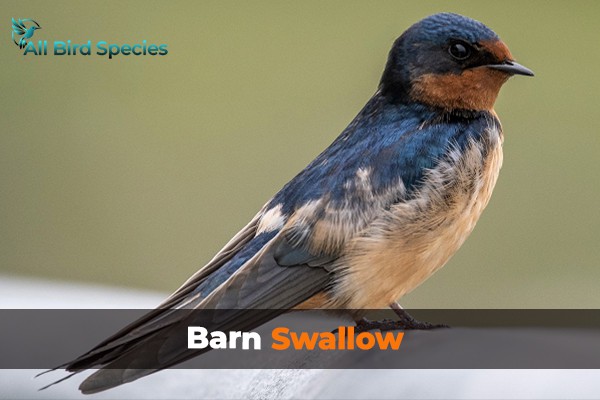
Visual Identification
Spotting a barn swallow in the wild is a treat. Males are more colorful than females, who weigh about 0.67 ounces and have lighter underparts. Young barn swallows look like females but have shorter tails and less vibrant colors around the throat. Their long forked tails make them stand out in flight.
Nesting Habits and Territory
Barn swallows build their nests in safe spots, like under eaves or bridges. A nest usually has four eggs with small spots in cream, pink, or reddish colors. The eggs hatch after 13 to 14 days, and the young leave the nest in about 20 days.
During breeding season, they defend their nests fiercely. This shows their social nature and need for a safe home.
Despite their beauty, barn swallows face challenges. In Canada, they’re considered a species of special concern due to habitat loss and pesticide effects on their food. They’re listed as Least Concern on the IUCN Red List, but we must keep an eye on their numbers to ensure they keep flying.
| Attribute | Details |
|---|---|
| Average Length | 6.75 inches |
| Wingspan | 15 inches |
| Female Weight | 0.67 ounces |
| Egg Count | Approximately 4 |
| Incubation Period | 13 to 14 days |
| Nestling Duration | 20 days |
| Conservation Status (Canada) | Species of Special Concern |
| IUCN Red List Status | Least Concern |
Raptors with Long Wings
Kestrels and red-tailed hawks are unique in the raptor world. They have long wings that help them hunt in amazing ways. These birds are a treat for birdwatchers and nature lovers.
4. Kestrels
Kestrels are the smallest raptors in the U.S. They are known for their agility and precision in flight. Their long wings let them hover while they hunt small mammals and insects. The males have bright blue wings, while females have browns and tans. These colors help them in hunting and surviving.
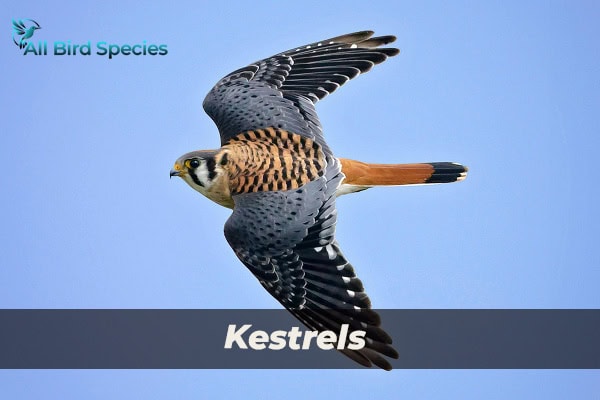
5. Red-tailed Hawks
Red-tailed hawks are bigger and have a striking red-orange tail. They can vary in size, with females often being twice as heavy as males. Their long wings help them glide over long distances to find food. You can see them on trees or flying high over fields, using their sharp eyesight to spot prey. Their calls and soaring flights make them a symbol of North American wildlife.

| Feature | Kestrels | Red-tailed Hawks |
|---|---|---|
| Size | Smallest U.S. falcon | Among the largest raptors |
| Wing Adaptation | Long wings for hovering | Long wings for gliding |
| Prey | Insects and small mammals | Rabbits, rodents, and birds |
| Habitat | Open terrains, grasslands | Forests, pastures, and residential areas |
| Distinguishing Feature | Vibrant plumage, especially in males | Red-orange tail and square head |
6. Peregrine Falcon
The peregrine falcon is the fastest bird in the world. It can dive at speeds over 240 mph. This makes it a top predator, catching birds in mid-air.
In level flight, it goes from 55 to 68 mph. This shows its agility and precision.

These raptors have long, sleek wings for quick moves. Watching them is thrilling for bird lovers. It shows off their hunting skills and aerial displays.
Recently, birdwatchers have seen changes in their migration patterns. Peregrine falcons are showing up early at places like Jordan Lake. This could mean they’re changing their behavior. It makes birdwatching more interesting and helps us appreciate these birds more.
| Bird Species | Maximum Speed (mph) | Type |
|---|---|---|
| Peregrine Falcon | 240 (dive) | Raptor |
| Common Swift | 70 | Songbird |
| Brazilian Free-tailed Bat | 100 | Mammal |
| Anna’s Hummingbird | 60 | Hummingbird |
7. Common Nighthawks
Common nighthawks are amazing birds that hunt at night. They have special adaptations for this. Their feathers blend well with their surroundings during the day, making them hard to see. They are about 22 to 25 cm long and have a wingspan of 51 to 61 cm. This shape lets them fly fast and catch insects at dusk.
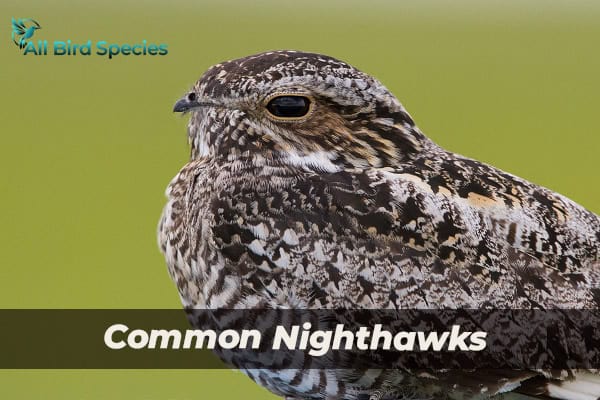
Distinctive Features of Common Nighthawks
These small birds with long wings have many unique features. They weigh between 55 to 98 g and live for about 4 to 5 years. There are nine subspecies, each suited to different places. Their colors, like brown and gray, help them hide from predators in the day.
Behavior and Migration Patterns
Common nighthawks have interesting behaviors. They migrate between 2,500 to 6,800 kilometers each year. They start moving north in late February and south in mid-July, ending in early October. Many go to South America, especially Argentina.
Studies show they gather along the Mississippi Flyway before crossing the Gulf of Mexico to Brazil for the winter. Urban threats, like crows eating their eggs, are a big problem. Conservation efforts are helping these birds by protecting their habitats and reducing pesticide use. By supporting these efforts, we can help these amazing birds.
| Feature | Detail |
|---|---|
| Length | 22 to 25 cm (8.7 to 9.8 in) |
| Wingspan | 51 to 61 cm (20 to 24 in) |
| Weight | 55 to 98 g (1.9 to 3.5 oz) |
| Lifespan | 4 to 5 years |
| Recognized Subspecies | 9 |
| Migration Distance | 2,500 to 6,800 km (1,600 to 4,200 mi) |
| Northbound Migration Start | End of February |
| Southbound Migration Start | Mid-July |
| Wintering Grounds | Mainly in Brazil |
Conclusion
Our journey into the world of small birds with long wings has shown us their amazing traits, homes, and ways of life. We’ve learned about the special features of birds like swallows and hummingbirds. We also saw how fast the peregrine falcon can fly.
The design of their wings, made of feathers, bones, and muscles, helps them adapt and survive. This knowledge makes us value the variety of birds around us even more.

